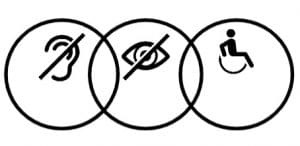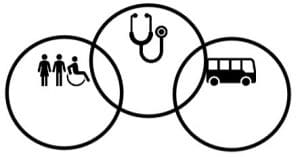Only 10 percent of elders age 65 or older age at home in the U.S. To age in place is to have the ability and opportunity to continue living self-sufficiently at home. Aging at home involves many considerations that must be addressed. The first step recommended is to plan for long-term lifestyle goals.
 Step 1: Assess health status: Identify any underlying health issues that should be addressed and seek the appropriate assistance to better suit your needs at home. Get appropriate directions from healthcare professionals or your physician concerning at-home health care needs.
Step 1: Assess health status: Identify any underlying health issues that should be addressed and seek the appropriate assistance to better suit your needs at home. Get appropriate directions from healthcare professionals or your physician concerning at-home health care needs.
 Step 2: If you have underlying health issues, remember that nobody knows your own body as well as you do. It will be especially important for you to obtain assistance for your home-care needs, such as household chores, grocery shopping, financial assistance, health care, etc.
Step 2: If you have underlying health issues, remember that nobody knows your own body as well as you do. It will be especially important for you to obtain assistance for your home-care needs, such as household chores, grocery shopping, financial assistance, health care, etc.
 Step 3: Address concerns such as transportation, financial budgeting, home modification/safety concerns, maintaining social connections, and more. Connect with others in the community regarding living expenses and other available options that may better assist independent living. Contact a financial specialist who can assist with financial planning to continue independent living.
Step 3: Address concerns such as transportation, financial budgeting, home modification/safety concerns, maintaining social connections, and more. Connect with others in the community regarding living expenses and other available options that may better assist independent living. Contact a financial specialist who can assist with financial planning to continue independent living.
Healthy Living
The correlation between a healthy lifestyle and minimal years of disability is undeniable.
Alzheimer’s & Dementia Awareness
Early detection of memory loss and Alzheimer’s disease is important for prevention.
Brain Health
Taking care of your mind is just as important as taking care of your body.
Exercise for Elders
Elders 65 and older need exercise to improve their balance and increase their longevity.
Fall Prevention
Falls are the leading cause of injury deaths for Native elders age 65 and over.
Home Modification
Living spaces need adjustments for people with physical limitations so they can live independently and safely.
